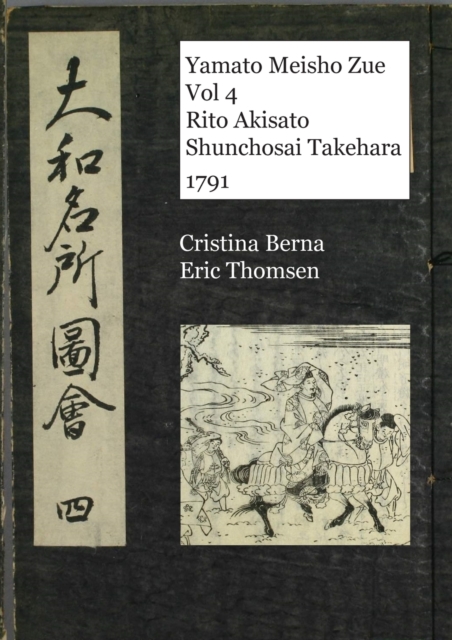
Yamato Meisho Zue Vol 4 Rito Akisato Shunchosai Takehara 1791 Paperback / softback
by Cristina Berna, Eric Thomsen
Paperback / softback
Description
The Yamato meisho zue (1791) on the province of Yamato is one of the best known Japanese illustrated woodblock printed books.
It is a forerunner for the many Tokaido series of colored prints of the ukiyp-e genre like the ones by Hokusai and Hiroshige a.o.
The intention of publishing this is to give lovers of Japanese prints some background material. It may also be used as a coloring book although there is a lot of text.
The Meisho zue printed books' illustrations are originally in black and white and are therefore perfect for coloring exercise and also for the study of landscape design.
The original size was hanshibon, c. 26 x 18 cms / ~10.25in X 7in.
This volume is vol 4 of six, which were each enveloped in a blue folder, Chinese style, and the pages stiched together. The authors hope to be able to publish the rest in the series as well as some other printed books series.
For the reader wishing more information the authors refer to their book Hokusai 36 Views of Mt Fuji, which is available in pocket version, hard cover and large format.
The meisho zue (å 所 図 会?, literally "illustrated books of famous views") are illustrated books describing famous places (the meisho) of Japan during the second half of the Edo period, late 18th and first half of the nineteenth century. The Edo period itself is usually given as c. 1600 to 1868. The places are described there in the text through their history, the related legends, the sites to visit, as well as by the illustration which offers a faithful overview of the topology. These illustrated books are characterized by the importance of image and the desire for simplicity which make them objects intended for the greatest number of people.
The black and white meisho zue are fascinating in themselves, but they were also direct sources for the ukiyo-e artists Hokusai and Hiroshige, who had not visited all the sites they made colored prints about.
Meisho originally meant "a place with poetical association" or "a place famed in poetry". The characters used to write the word also read nadokoro. This refers to topics accepted in waka.
In the Muromachi Period (1392 - 1573) meisho started to change meaning. Non traditional waka subjects became meisho - historical spots, flourishing places, famed or notorious places, and the word came to mean "places which attract mass interest".
By mid Edo period the original meaning was completely lost. Kunisada's Edomeisho zue, Views of Famous Places in Edo or Scenic Places in Edo 1852 was for instance half length actor prints with some Edo places background
Information
-
Item not Available
- Format:Paperback / softback
- Pages:160 pages
- Publisher:Missys Clan
- Publication Date:28/01/2021
- Category:
- ISBN:9781637526644
Information
-
Item not Available
- Format:Paperback / softback
- Pages:160 pages
- Publisher:Missys Clan
- Publication Date:28/01/2021
- Category:
- ISBN:9781637526644






